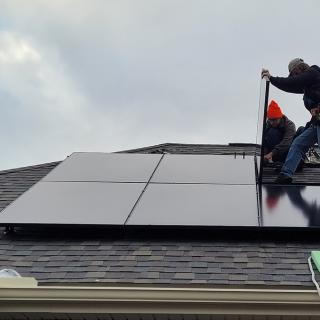USDA announces it will discontinue funding solar projects
The U.S. Department of Agriculture announced it will discontinue providing funds for solar and wind projects, through its Rural Energy for America (REAP) grant program. In recent years the USDA has provided over $4 billion to fund energy projects in rural and farming communities.
The Inflation Reduction Act (IRA) of 2022 added over $2 billion in funding for the program through Fiscal Year 2031. Post-IRA, over $1 billion in funds supported 6,822 projects from 2023 to 2025, contributing an estimated $2.75 billion to rural economic development.
The REAP grant program provides guaranteed loan financing and grant funding to agricultural producers and small rural businesses for renewable energy systems or to make energy efficiency improvements. The program was officially created in 2008 through the Farm Bill when Congress combined an energy efficiency program with one that focused on renewable energy.
About 424,000 acres of rural land have been affected by solar and wind development as of 2020, which represents less than 0.05 percent of the nearly 900 million acres used for farmland, according to a 2024 USDA study. The study also found that most of that land stayed in agricultural production after the projects were completed.
The future of the program now remains in doubt. The REAP grant and combined grant/loan application process has been temporarily paused from July 1 to September 30, 2025. It is unclear whether the program will resume after that date.
Already awarded funds were frozen in January of this year, due to a presidential order to review Inflation Reduction Act (IRA) funding. To have previously obligated funds released, applicants are now required to resubmit their proposals to refocus on American energy production and remove any mention of Biden-era DEI and climate mandates.
Electricity Prices Are Climbing at More Than Twice the rate of Inflation
Across the country, electricity prices have jumped more than twice as fast as the overall cost of living in the last year. And one out of six households report having trouble paying their current electric bills.
Utilities blame soaring demand as the primary reason for rate increases. The Energy Department projects that for the first time next year data centers and other commercial customers will use more electricity than residential households.
The soaring price of natural gas is also pushing power prices higher. More than 40 percent of electricity is generated using natural gas. The Energy Department says the cost of gas used to generate power jumped more than 40 percent in the first half of this year compared to 2024. Another 17 percent increase is expected next year.
And studies have found that President Trump's pro-fossil fuel, anti-renewable energy policies will also lead to higher prices. A July report from climate thinktank Energy Innovation found that the Republicans' spending megabill that the president signed last month could increase wholesale electricity prices by as much as 74 percent, largely due to its repeal of many Biden-era green energy incentives.
US on track to add record amount of generation - 93 percent renewable
The United States is on track to break records in adding additional power generation capacity in 2025, the U.S. Energy Information Administration (EIA) reported last week.
EIA reported that developers plan to add 64 GW of new generation this year, which would surpass the current record of 58 GW set in 2002.
A key difference between this year and the 2002 total is that this year 93 percent of all the new capacity will come from wind, solar and battery sources - with over half coming from solar. The 2002 total included 57 GW of natural gas-fired generation (or 98 percent of the total), while this year only 4.7 GW of gas generation is expected to come online - representing only 7 percent of the new generating capacity.
The EIA update also touched on forecasts dealing with the retirement of generation facilities.
EIA reported that electricity generators plan to retire 12.3 GW of capacity this year, 65 percent more than in 2024. The great majority of these retired facilities will be aging coal plants and natural gas turbines.
220-MW Ohio solar project approved for construction
The Ohio Power Siting Board (OPSB) has approved the 220-MW Eastern Cottontail Solar Project for construction. The array will be located just north of Lancaster in Fairfield County, Ohio.
The project is projected to create approximately 500 construction jobs, as well as a number of long-term jobs in operations and maintenance. Over the life of the project, Eastern Cottontail is expected to generate up to $80 million in tax revenues for local services throughout Fairfield County.
The array will generate enough electricity to power the equivalent of 42,000 average American homes. The project will implement an agrovoltaic component -- with sheep grazing under the panels to assist with vegetation management, ke eping the land in agricultural use.
Solar leads new power generation
The United States is on track to break records in adding additional power generation capacity in 2025, the U.S. Energy Information Administration (EIA) reported last week.
EIA reported that developers plan to add 64 GW of new generation this year, which would surpass the current record of 58 GW set in 2002.
A key difference between this year and the 2002 total is that this year 93 percent of all the new capacity will come from wind, solar and battery sources - with over half coming from solar. The 2002 total included 57 GW of natural gas-fired generation (or 98 percent of the total), while this year only 4.7 GW of gas generation is expected to come online - representing only 7 percent of the new generating capacity.
The EIA update also touched on forecasts dealing with the retirement of generation facilities. EIA reported that electricity generators plan to retire 12.3 GW of capacity this year, 65 percent more than in 2024. The great majority of these retired facilities will be aging coal plants and natural gas turbines.



